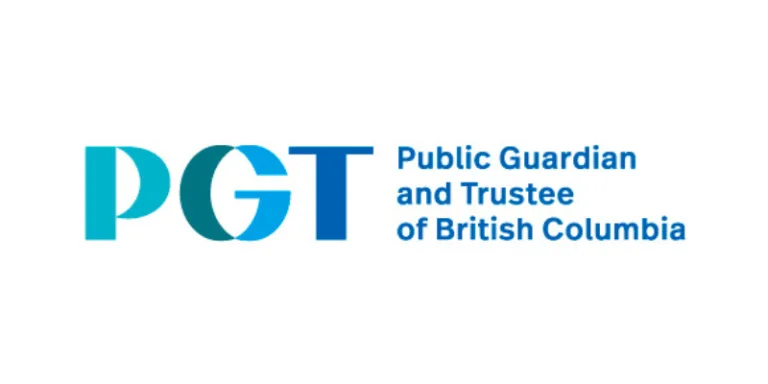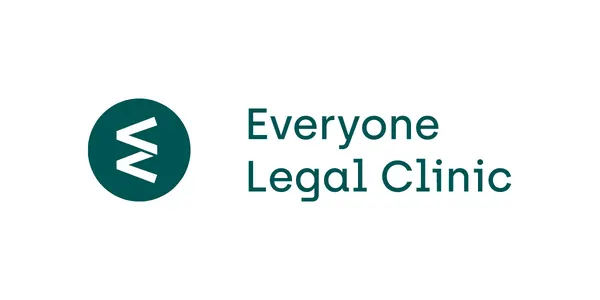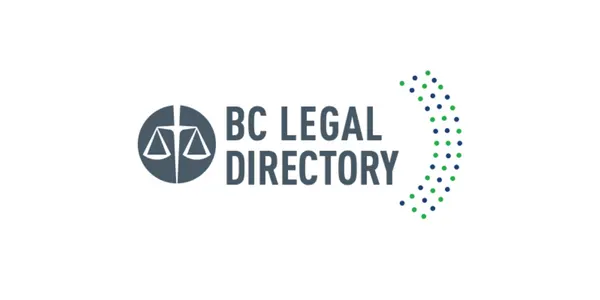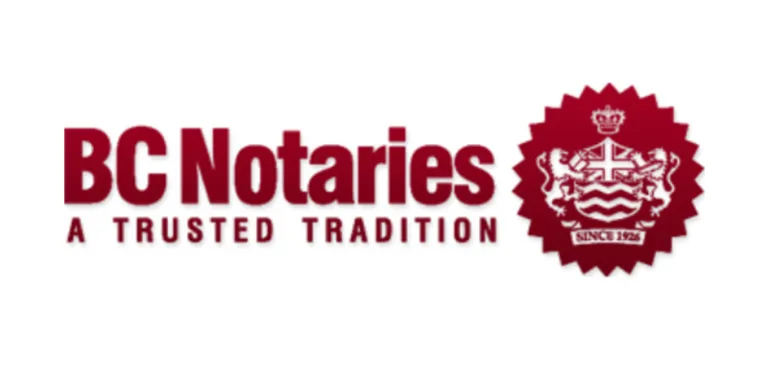
As a personal representative of someone's estate, could I be personally liable for the debts they leave behind?
When a loved one dies, someone has to deal with their property and debts. The process can be time-consuming and intimidating. We’ve broken it down into 10 main steps. Learn how to settle an estate.
What you should know
When someone dies, their property and possessions form their estate. (There are some exceptions, such as most property owned jointly with others, and insurance policies and investment plans that name a specific beneficiary. We explain these exceptions here.)
The estate needs to be dealt with. Debts must be paid, assets may have to be sold, and the property must be distributed.
If the deceased left a will, the executor named in it settles the estate. If there isn’t a will (or if the named executors won’t be acting) then a person can apply to court to become administrator to take charge of the estate.
Whether you’re an executor or administrator, under the law you’re called the personal representative of the estate. The court gives you the authority to settle the estate.
The duties of a personal representative include the following:
Protecting the property left behind, such as by notifying the insurance company if the deceased’s home is unoccupied.
Making the funeral arrangements and paying the funeral expenses from the deceased’s estate.
Locating the property, also known as assets of the estate.
Paying any debts and taxes.
If there’s a will, distributing what remains of the estate among the beneficiaries. These are the people named in the will to receive a share of the estate.
If there’s no will, locating all relatives who may be legally entitled to a share of the estate (known as an intestate successor or heir). This may involve contacting people outside of Canada.
The personal representative must put the interests of the estate before their own interests. This is the case even if — especially if — they have a personal interest in the assets, or they’re a beneficiary or heir.
As a trustee, the personal representative is accountable to the beneficiaries and heirs. For example, they must keep records and give all beneficiaries or heirs a final statement of accounts.
The steps involved
If you've been named as executor in a will, before taking any steps, be clear on whether you want to take on the job. Once you start dealing with any estate assets, you’re legally bound to continue. Examples include paying debts or changing the insurance on a home. Doing these things is considered intermeddling with the estate. You must continue administering the estate until the court discharges you of your responsibility.
As long as you haven’t started dealing with any estate assets, you can back out of being the executor. This is called renouncing — that is, declining — your appointment as executor. You can sign a form called a notice of renunciation (form P17), which will need to be filed in court when someone applies for probate or administration. (The form is on this website.)
About the death certificate
You’ll need the death certificate to apply for benefits and to settle the affairs of the deceased. The funeral home will ask you how many original death certificates you require. For most estates, two original death certificates should suffice. You can have additional “certified true copies” prepared by a notary public or a lawyer if needed. (You can also order the death certificate directly from BC Vital Statistics; each original costs $27.)
Your first step is to try to find out whether the deceased had a will. They may have left instructions in a will about their wishes for organ donation, burial or cremation, and for their funeral or memorial service.
If the deceased had a will, you'll want to find the original. You need the original to probate the will. This is a legal procedure, explained here. It confirms that the will is legally valid and can be acted on.
Even if you think the deceased didn’t have a will, you should make an effort to look for one. If it turns out no will exists, you may need to apply to court for a grant of administration. This document gives you the authority to deal with the estate. When you make the application, you’ll need to swear that no will of the deceased was found. The law requires that you search in all places that could reasonably be considered a place where a testamentary document might be found.
Where to start looking
The original will may be in the deceased’s home, in a safety deposit box, or at the office of the lawyer or notary public who helped prepare the will.
To access a safety deposit box, you’ll need a key to the box, your own identification, and a copy of the death certificate. If you can’t find the key, the bank may drill the box open for a charge. If the will is in the safety deposit box, and you’re named as executor, the bank should let you take the will.
Search the wills registry
If you strike out looking for the will in the usual places, you can search the wills registry. The search certificate may indicate the location of the original will. You can search the registry by submitting a completed application form and fee to the Vital Statistics Agency. You’ll be provided with a certificate of wills search. You’ll need to file a copy of this certificate with the court if you eventually make an application for probate or administration.
Limits to the wills registry search
A certificate of wills search doesn’t always show the whole picture. If a search result comes back empty, that doesn’t necessarily mean the deceased didn’t have a will. It’s possible they didn’t file a notice with the registry. Or they may have moved the will, or cancelled it.
If you’re able to find the deceased’s original last will, make sure it’s valid. A will can be invalid or might need to be rectified by a court for a number of reasons. For example:
It might not have been properly witnessed or signed. A will must be signed at the end by the will-maker in front of two witnesses present at the same time.
The will-maker might not have had the legal capacity to make a will. In BC, a person must be age 16 or over and mentally capable of making a will.
The will-maker might have been under duress or subject to undue influence. A will or a gift in a will may be invalid if the will-maker was pressured by another person to make the gift. The court will consider factors such as physical and emotional dependency of the will-maker on the person pressuring them.
If the deceased left any kind of document setting out their wishes
You should talk to a lawyer if the deceased left a letter, electronic message, or other note that says who they wanted to leave their things to, or to be their executor. The court can recognize a document as a will even if it doesn’t meet the formal legal requirements of one.
As the personal representative, it’s your responsibility to make sure the deceased’s assets are safe. For example:
If no one’s living at the deceased’s home, secure it. Turn appliances off, and make sure any pets are looked after. If the home is to remain vacant, tell the police.
Make sure any vehicle they owned is locked in a safe place.
Safeguard any wallet, purse, or briefcase.
Secure the deceased’s key pieces of identification, such as their social insurance card, medical card, driver’s licence, and passport.
Search for credit cards, cash, jewelry, securities, and other valuables, and arrange for their safekeeping.
Confirm there’s valid insurance on the home and any vehicles. (Check the expiry dates.) If the deceased lived alone, check the vacancy provisions to ensure that the coverage continues. Most home insurance is cancelled automatically if the home is vacant for more than 30 days.
Other things you should do right away
Other steps to protect the assets include the following:
Notify financial institutions where the deceased held accounts.
Cancel any credit cards.
Cancel any subscriptions and redirect mail to a safe location.
Apply for Canada Pension Plan death benefits.
If the deceased owned a business, arrange for its ongoing management.
If the deceased had a will that includes a trust, take steps to ensure that the trust assets are properly invested or kept in a safe place.
Where a will includes a trust
A trust is a part of the estate that’s set aside for a beneficiary, on certain terms. Trusts are often created for minor children. The trustee (often the executor) is responsible for:
making sure all the assets in the trust are properly invested or kept in a safe place
filing annual trust tax returns
making payments to the beneficiary as directed by the will
The personal representative handles the funeral arrangements and pays the funeral expenses. There are many decisions to make when arranging the funeral, usually very quickly. For example:
Where and when will the funeral be?
Will the deceased be buried or cremated?
Will there be a death announcement published in the paper or online?
Paying funeral expenses from the deceased's bank account
To pay the funeral expenses, you can take the invoices to the bank where the deceased kept an account. Most banks will pay the expenses directly from the deceased’s account. The bank may wish to see a copy of the death certificate and the will, if there is one.
Honouring the deceased’s wishes
When possible, arrangements should be in accordance with the deceased's wishes. You’ll also want to consider the wishes of the deceased’s relatives. If you’re unwilling or unable to give instructions on the question of burial or cremation, the spouse may.
Where there’s a will that sets out the will-maker’s preference for burial or cremation, that preference is binding on the personal representative. (That’s unless it’s unreasonable or impracticable or causes hardship.) The same applies if the deceased opted for burial or cremation in a contract for cemetery or funeral services. But if they expressed their preference in another way, such as through a letter or simply telling a loved one, that’s not legally binding.
We have more on making the funeral arrangements.
Once the funeral is over, beneficiaries under the will or potential heirs (when there’s no will) are often anxious to know what’s happening next and when they’ll receive their inheritance.
Hold a meeting with family members and anyone who’s entitled to a share of the estate (that is, beneficiaries or heirs). Although such a meeting isn’t mandatory, it allows you to:
review the terms of the will (if there is one) and explain next steps
if there’s no will, discuss your intention to apply as administrator
set expectations around timelines for administering the estate and distributing the assets
discuss your different duties and liabilities as personal representative
request approval for compensation, if you intend on charging a fee
gather personal information from those entitled to a share of the estate (for example, their full name, address, and social insurance number)
discuss how the personal belongings will be divided
When someone dies without a will
If someone in BC dies without a will, the law says how their estate will be divided. Here, we explain how this law works.
Making an inventory of the estate is one of the prime tasks of the personal representative. An inventory should list the estate assets and liabilities.
Getting information for the inventory
In tracking down information for the inventory, you'll have to contact many people. You'll need to show them a copy of the death certificate. If you’re named as the executor in the will, include a copy of the will to demonstrate your authority to act on behalf of the estate.
If you aren't named as executor
If you aren’t named as the executor in the will, you may have difficulty getting some of the information you need. Whoever holds the deceased’s assets (such as a bank) may refuse to give it to you.
If this happens, you might need to apply for a grant of administration. You can file all of the application documents except the form P10, the affidavit of assets and liabilities. At the same time, you can apply for authorization to obtain estate information using form P18. If the court grants your request, third parties must give you information relating to the deceased’s assets.
Identify the assets
Among the steps to take to identify the assets are:
Bank accounts. Contact the deceased’s bank or credit union. Gather information on account balances, loans outstanding, and investments held at the date of death. Note any joint bank accounts — typically, they pass directly to the surviving joint owner.
Life insurance. Begin claims on life insurance policies (including group insurance or other plans).
Wages and benefits. Contact the deceased’s employer. Find out if they’re owed any wages. See if the spouse or family are entitled to any benefits.
Government benefits. Contact Canada Pension Plan and Old Age Security to cancel any pension benefits. Figure out whether any surviving spouse or children are eligible for survivor or continuing benefits.
Investments. Locate all investment accounts, stock certificates, or bonds. Get the market value of each on the date of death. Note any investments that designate (that is, name) a specific beneficiary — these investments pass directly to the designated beneficiary.
Real property. List all real property the deceased owned alone or with others. List any mortgages. Have appraisals done, as of the date of death, on any properties that were not jointly owned. Note any property owned in joint tenancy — typically, it passes directly to the surviving joint owner.
Personal possessions. List any other assets. This may include cars, boats, household goods, jewelry, electronic equipment, coin or art collections, and other personal effects. Estimate values. Where you’re not sure, get an appraisal.
It's also a good idea to search for unclaimed property in the deceased's name. Unclaimed property is the legal term for money held by an organization that the rightful owner doesn’t know about or hasn’t used for a long time. BC Unclaimed, a non-profit society, maintains a searchable database of unclaimed property in the province. You can search it here to see if the agency is holding money in the deceased’s name.
For unclaimed bank account balances and other federally-regulated funds, you can do a search of the deceased’s name on the Bank of Canada’s website.
Keep detailed accounts
As personal representative, you’re responsible to account for the estate assets. Keep records of all income received and any expenses paid. Keep all receipts, and copies of all letters and forms you send.
List the liabilities
In listing the liabilities of the deceased, include:
the funeral expenses
any amounts owing relating to their home, including utilities, rent, or strata fees
any professional fees
if a probate or administration application is made, the probate fees
municipal and income taxes owing
all other claims as of the date of death
Not every liability listed above is one that you’d disclose to the probate registry (if you apply for a grant of probate or administration). One reason is that you only have to tell the registry about liabilities that existed as of the date of death. But when making an inventory, you’re trying to get an overall picture of what the estate owns and owes. So it’s a good idea to also list estate expenses that arose after death.
Protecting yourself from liability
As the personal representative, you could personally be on the hook if you don’t pay the deceased’s debts — including unpaid taxes — before you distribute the estate.
To find out who the deceased owed money to, look in their records for evidence of mortgages, loans, and accounts with outstanding charges.
As personal representative, you must notify a surviving spouse that they may have a right to the spousal home. If you sell or transfer the home without providing proper notice, you may be liable for the spouse’s loss. Get legal advice if you’re not sure about your obligation to notify a spouse about this entitlement.
Placing a notice to creditors
Depending on the circumstances, you may want to advertise for possible creditors. Advertising for creditors involves placing a notice in the BC Gazette, a government publication. Here is the form to place a notice to creditors.
A creditor will have 30 days after publication of the notice to come forward with a claim against the estate. Once 30 days have passed, when you distribute the estate, you won’t be liable for any claims from creditors you didn't have notice from.
Depending on the circumstances, you may need to probate the will or seek a grant of administration. If you do either of these, you must submit paperwork to the court. We explain the process here for probate and here for a grant of administration.
If everything’s in order, the court will issue a grant of probate or a grant of administration. You can then show this document to banks and others who hold assets of the estate (such as the land title office), confirming that you have the authority to act for the estate.
You may not need to apply to court
For most estates worth less than $25,000, you may not have to ask the court for the authority to deal with it. (If the deceased held any real property, you’ll have to make a court application, regardless of the value of the estate.)
Once you have the grant of probate or administration, you’ll be able to transfer the estate assets into your name as personal representative. You can then settle the deceased’s debts and any expenses that you incur in the course of administering the estate.
If the estate is insolvent
If the estate doesn’t have enough money to pay all outstanding debts, get legal advice as soon as possible. You don’t want to become personally liable for the debts.
Prepare and file income tax returns
As personal representative, you must file income tax returns for the deceased and possibly for the estate:
You must file a tax return for the deceased for the year of death.
If the deceased hadn’t filed a return for any year before the year of death and tax is payable, you must file a tax return for the person for those prior years.
If the estate earns any income before distribution, you must file a tax return for the estate for each year after the date of death.
If the deceased had a will that establishes a trust, you must file a tax return for the trust.
If the deceased had assets or income in another country, you may need to file a foreign income tax return as well.
After the income tax is reported, assessed and paid, apply for a clearance certificate from the Canada Revenue Agency. You can do so here. For your own protection, you should have this certificate before you begin to distribute the estate.
For more information, see the Canada Revenue Agency publication Preparing Returns for Deceased Persons, available on the Canada Revenue Agency website.
Before you distribute the estate, you must give the beneficiaries or heirs an accounting of your administration of the estate. And they must agree with it.
Prepare a final statement of assets, debts, income, expenses, and distribution. This statement is for the beneficiaries or heirs to approve. If they refuse to approve it, you’ll need to have the accounts reviewed by the court so that your administration is approved. This process is called the passing of accounts. We explain the steps involved.
In the accounting, state any fee you’re charging. If the beneficiaries or heirs don’t agree with the proposed fee, you’ll need to have your accounts reviewed by the court, who will set the fee. Here, we have more on the fee you can charge.
Asking the beneficiaries to sign a release
The beneficiaries or heirs must approve your statement of accounts. Ask them to sign a release. In it, they agree not to make any claims against you as personal representative. They do this in consideration of the distribution they receive from the estate. We have a template consent and release form you can use as a starting point to draft your own.
More on accounting to beneficiaries
As personal representative, accounting to beneficiaries is one of your core responsibilities. We have tips on how you can handle your accounts to avoid problems down the road.
Once you ensure that all debts, expenses and taxes have been paid, that all claims against the estate have been satisfied, and that your accounts have been approved, you can distribute the remainder of the estate.
Timing of the distribution
If you needed to get a grant of probate or administration, the law says you can’t distribute the estate until 210 days after the grant was issued. You do this to make sure that no one is going to make a claim against the estate. This may include a spouse or child challenging the will, a creditor claiming a debt owed, or a spouse making a spousal home claim.
If after 210 days no claim is made against the estate, you may distribute. (Note that you can distribute sooner if all of the beneficiaries and heirs consent to earlier distribution.) Pay attention to these rules. You might have to pay out of your own pocket if the assets go to the wrong people.
Certain people may challenge the will
In general, a will-maker is free to leave their estate to whomever they want. However, their spouse or children may challenge the will if they feel that the deceased didn’t adequately provide for them. A friend or other relative may be able to challenge the will for other reasons.
When distributing under a will
If there’s a will, first distribute any gifts of specific property. Sometimes a will-maker attaches a separate list with the will that says who should receive particular items. That list may or may not be binding on the executor, depending on the will.
Estate assets are transferred first to the executor, and then to the beneficiary. These steps are often done at the same time. The land title office has the forms for transferring real estate. Autoplan handles transfers of motor vehicles.
If any cash and belongings remain after you distribute the specific gifts, divide what remains, according to the will’s instructions. This remainder is known as the residue. It’s distributed to the residual beneficiaries.
If the will doesn’t have a residue clause, you must distribute the remainder as if there were no will. This is called intestacy. You should get legal advice if this situation occurs.
Who can help

Public Guardian and Trustee
A government office that can manage an estate, for a fee, when the executor is not able or willing to do so, or when someone dies without a will.

Access Pro Bono's Free Legal Advice
Volunteer lawyers provide 30 minutes of free legal advice to people with low or modest income.

Access Pro Bono’s Everyone Legal Clinic
Clinicians provide affordable fixed-fee services on a range of everyday legal problems.

Lawyer Referral Service
Helps you connect with a lawyer for a complimentary 15-minute consult to see if you want to hire them.

BC Legal Directory
Search for a lawyer by community or legal issue. From the Canadian Bar Association, BC Branch.


